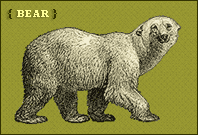|
Can you think of a task more daunting than classifying all of
Earth's life forms, which may be as high as 50 million? Or even of
classifying a single group, such as the 25,000 species of orchid? So
why bother? Keeping track of the amazing diversity of life and being
able to compare and contrast different organisms in the tree of life
is valuable in and of itself. But taxonomy, as this field is called,
can also lead to surprising insights and discoveries, from finding
new drugs to giving scientists a systematic way to monitor the
effects of global environmental change.
Scientists classify organisms into a hierarchy that begins with
kingdom and works its way deeper into phylum, class, order, family,
genus, and species. If you're new to this system, it can be a
challenge simply remembering these categories. Here's a mnemonic
referring to 16th-century Spanish exploration that might help:
King Philip Crossed Over For
Gold and Silver.
In this feature, you'll step into the shoes of a taxonomist and
classify three forms of life: a plant, an animal, and
a...—well, you'll need to figure that one out for yourself.
|

|
|
Flash is a plug-in that allows for increased
interactivity. If you can see the animated boxes at
left, the plugin is already installed. If you do not see
the boxes, you can
install the Flash plugin, or select this feature's non-Flash version.
|
|
|

